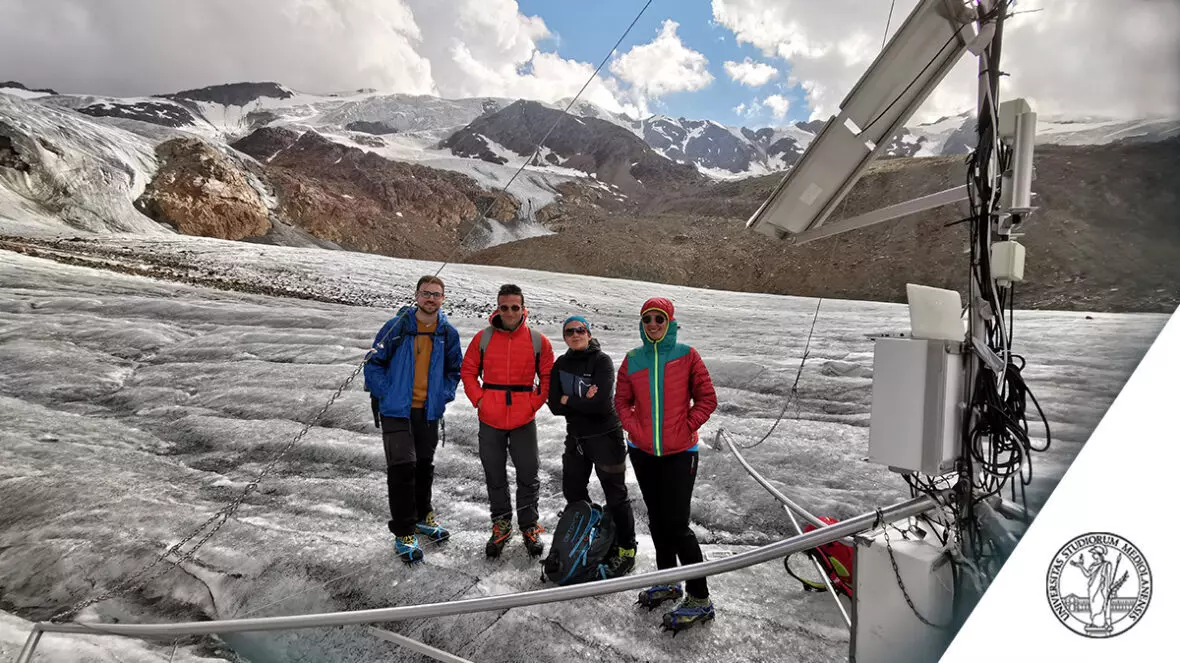Monitor the White Giants

We talk to Prof. Guglielmina Diolaiuti of the Department of Environmental Science and Policy (DESP) of the University of Milan
Q. Can you explain the work of your Department?
A. The Department of Environmental Science and Policy was born in 2017 responding to the need to study the environment and its natural and anthropogenic components with a modern scientific approach, which combines the traditional naturalistic disciplines with the skills of economists and experts in socioeconomic field. In Italy it is a big news but abroad this combination is now consolidated, it allows to train young graduates with useful skills to solve and manage complex environmental problems. I am a Professor of Physical Geography and Geomorphology and I deal with the physical landscape of the high mountains and its transformations, especially as a result of the ongoing climate changes. My research, in particular, is focused on the “White Giants” of our mountains, the glaciers! My group studies the mass and surface variations of glaciers in the Alps and Karakorum, for this application we use different techniques, ranging from remote sensing with satellites and drones to field surveys, that involve the acquisition of measurements on the surface of glaciers and the installation of instrumentation on glaciers.
Q. For what type of monitoring do you use LSI LASTEM instrumentation?
A. In 2005 we installed the first automatic weather station on the surface of an Italian glacier, the Forni glacier in the Stelvio National Park. The station was purchased by LSI LASTEM and is equipped with sensors to detect the 7 weather parameters as required by the WMO. The station is still working today and allowed to describe the surface weather conditions on a large alpine glacier for fifteen years. We measure the katabatic wind that blows even at 140 km/h and sweeps the glacier in a way not very different from what happens in Antarctica! We measure the short and long wave radiative components and calculate the turbulent flows that together with the net radiation determine the glacial melting. The collected data allow to estimate the melting of the ice at an hourly resolution at 2750 m altitude. Unfortunately, the result is that the glacier looses up to 8 cm of thickness per day and up to 6 m of thickness per year!!! The net radiometer allows to quantify the albedo or reflectivity of the glacial surface. This result in a slow but steady decline. It means that the glacier is less and less white and more and more grey over time due to dust and black carbon! This is a global problem, it does not concern only the Forni Glacier, it is called darkening and causes the world’s glaciers less and less white, to melt more and more rapidly.
Q. How long have you been using our instrumentation? What are the most important characteristics that a measuring device must have for your research?
A. As mentioned, we have been using LSI LASTEM instrumentation for 15 years on the Forni glacier and for 11 years in the Stelvio Park to measure the level of the water (which we convert into flow) of 11 streams in the Park with a prevalently nivoglacial supply. These hydrometric measurements are very important for the Park, in fact they allow to know how much water flows in the streams and its seasonal and inter-annual variability. The instrumentation for these measurements must be robust, acquire for long periods without human control in extreme environmental conditions, in remote and cold areas. We therefore need devices capable of withstanding these adverse conditions! It is not easy to find them on the market! Q. What are the ideas for improvement and innovation that you would like to suggest for the evolution of our systems? A. I would like to be able to download the data from E-Log with a simple USB and not necessarily having to bring the PC to the field (in a remote area…) or to be able to change the configuration from the data logger itself and not necessarily from the PC (always to facilitate myself in the field). The advantage of E-Log, however, is to have the display that shows me the data in the field and this is already excellent for a data logger to be used in remote areas. It wouldn’t hurt to be possible to configure it (simple things like changing the acquisition time resolution) in the field or complete the data logger with a small and low-cost tablet ready for these small operations.
